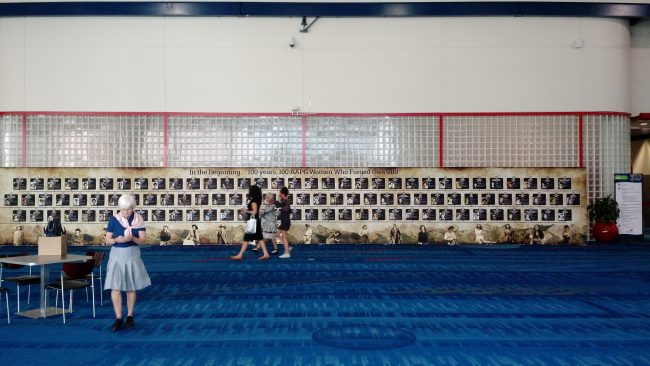AAPG Celebrates Pioneering Women in Petroleum Geology
April 12, 2017
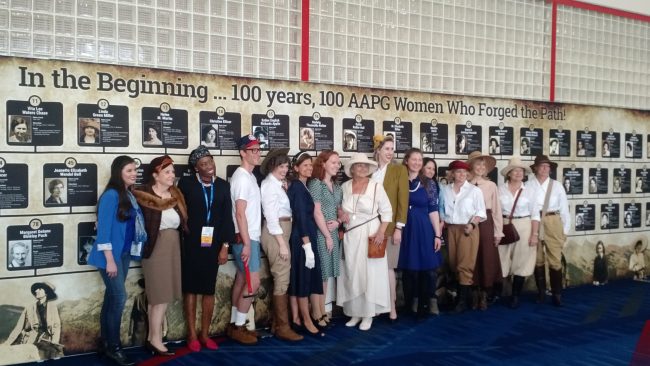
By Monica Kortsha
From almost the very beginning of its founding 100 years ago, women have been a part of the American Association of Petroleum Geologists. They worked on oil wells and ran companies. Bought and sold oil leases. Conducted research that led to technological breakthroughs. And supported their families throughout their careers, and communities with philanthropy.
These women were considered anomalies at the time. Ambition, technical expertise, and independence weren’t expected of women, and were often actively discouraged if not outright discounted. Despite the obstacles, these innovative women were able to thrive.
The female executives, entrepreneurs and scientists that filled a conference room at the Professional Women in Earth Sciences (PROWESS) annual meeting on April 1, 2017, were a testament to how society has changed over time, but that the pioneering spirit of AAPG women has stayed the same.
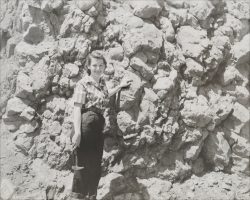
In honor of the 100-year anniversary, the organization for female members of AAPG looked back on pioneering women that came before them, and discussed barriers that still need to be overcome by sharing stories.
The full-day event at the George R. Brown Convention Center in Houston included:
- A world-premiere of a five-part documentary;
- The release of the aptly named “Anomalies,” a book of biographies on female AAPG members from the past 100 years;
- Multiple Q&A panels with women corporate leaders and entrepreneurs;
- A 25-foot-long poster featuring information on the first 100 female AAPG members; and
- A costume contest that showcased how the attire of geologists has changed over time, from the ornate hats and long skirts of the 1910s to the shoulder-padded power suits of the 1980s.
The book and the documentary were the brainchild of PROWESS founder Robbie Gries, who made a goal of compiling the stories of women in the field after the death of mentor and noted geologist Doris Curtis in 1991. Gries, owner of Priority Oil and Gas and Jackson School alumna (M.A. 1970), didn’t start the work in earnest until 2013 ago. She said she realized that the 100-year anniversary of AAPG was the perfect setting to explore the issues highlighted by the research.
“I was just amazed at how deep and rich [the history of women in the AAPG] was, how little we understood the sociology of the employment,” Gries said.
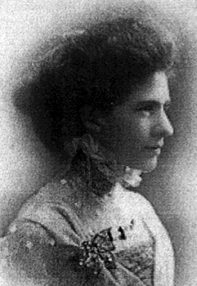
Reba Masterson, who enrolled at UT in 1908 but graduated from the University of Colorado with her B.S. in 1915, was an independent geologist who worked in oil fields in Texas and across the South and Midwest, ran a tungsten mine in Colorado, and never travelled without her pistol. Hedwig Knicker (B.A. 1916), who was inducted into the Jackson School’s Hall of Distinction in 2008, played a critical role in showing that microfossils, not macrofossils, could give oil companies a better idea of a field’s potential oil productivity. She established Texaco’s first micropaleontology laboratory, and spent about 20 years in Patagonia developing an oil field for Gulf Oil, a venture that gained her international recognition as well as financial success; 39 of the 56 bells in the University of Texas at Austin’s tower were paid for by Knicker.Nearly every aspect of the event stemmed from the biographies in “Anomalies.” The project began when Gries and other PROWESS committee members began sorting through old AAPG membership cards held in the association’s basement. Once they had the names of the first 100 female members of AAPG they began to collect stories, many of which involve women with a connection to The University of Texas at Austin.
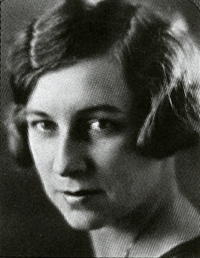
The poster featuring the first 100 female AAPG members included Masterson and Knicker, along with 12 other women who either graduated or enrolled at UT Austin. Knicker also received an additional recognition through Gries’ event outfit: a floppy canvas hat, long white skirt, and a rock hammer at the waist was an homage to Knicker, and placed second in the event’s costume contest.
In addition to highlighting accomplishments, the documentary also highlighted the barriers women in petroleum geology faced. Until the 1970s, it was the norm for women to be fired from their jobs once they married. And until laws against sex discrimination were passed, it was common for women employees to be barred from even entering executive meeting rooms, let alone holding executive positions. Many companies even refused to hire a woman for any geoscience job because they worried they might leave the workforce when they got pregnant.
One member of the audience spoke on her own experience with this sort of discrimination when first entering the oil and gas industry in the 1960s.In addition to highlighting accomplishments, the documentary also highlighted the barriers women in petroleum geology faced. Until the 1970s, it was the norm for women to be fired from their jobs once they married. And until laws against sex discrimination were passed, it was common for women employees to be barred from even entering executive meeting rooms, let alone holding executive positions. Many companies even refused to hire a woman for any geoscience job because they worried they might leave the workforce when they got pregnant.
“Companies assumed I would leave the company if I got pregnant. But men left all the time,” she said. “They left to work for another company, or went back to school. They never seemed to notice that.”
Gries noted that barriers appeared to be the highest in the period following World War II. Women in the early 20th century had to overcome stereotypes of what women could do, but they were given the chance to prove themselves and had strong male advocates, such as Sidney Powers, a founding member of the AAPG. And during World War II, women entered into the labor force to make up for the men on the front lines. However, in the post-war period there was overt pressure for women to steer clear of traditionally male professions so as not to “take” jobs from men returning to the work, and an expectation that once married a woman would have children and stay at home.
The AAPG membership file exemplifies the point. Between 1939 and 1945—the war years—50 women joined the AAPG. After the war, only 14 of them remained.
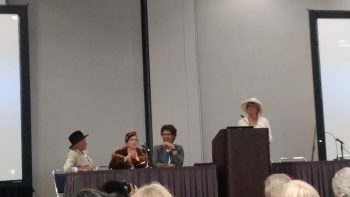
The documentary also highlighted how the prospects for women began to improve in the late 1970s. The women’s liberation movement, affirmative action, and oil shortages that called for increased exploration helped to eventually bring more women and minorities into the oil and gas industry than ever before. But once hired, women often faced sexism from colleagues. One conference attendee said the she remembered the women who worked in micropaleontology were disparagingly called the “bug pickers.”
Historically, micropaleontology has had more women in its ranks than other areas of petroleum geology. Gries suggested that this made its importance to the industry easier to overlook, especially as seismic imaging and well-logging techniques advanced.
“Because women were involved it took on a negative connotation,” Gries said. “Breakthroughs got discounted and lost.”
Nevertheless, panelist Susan Morrice, the founder and chairwoman of Belize Natural Energy, noted that no matter the time period, pioneering women in petroleum geology are united by a love of what they did and the ability to overcome or side-step obstacles no matter what they were
“They didn’t get stuck in cultural barriers,” Morrice said. “Technology has changed, but the mindset has stayed the same.”Nevertheless, panelist Susan Morrice, the founder and chairwoman of Belize Natural Energy, noted that no matter the time period, pioneering women in petroleum geology are united by a love of what they did and the ability to overcome or side-step obstacles no matter what they were.
The end of the event turned reflective. Many women attending the event talked about the stories that inspired them, and their desire to take the documentary to different communities. Carol Whaley, a geology undergraduate at Fort Hays State University in Kansas, said that every moment of the conference was a learning experience.
“I saw a lot of myself in the women in the documentary and in the panels. Learning from them makes me more comfortable about my degree choice,” said Whaley, who is the only woman studying geology in a class of about 20 people.
The immense outpouring of thanks and support from the attendees was evidence of the power of the stories. Now, with a book, movie, and advocates from across PROWESS, Gries said that there’s no reason why everyone shouldn’t be inspired by AAPG’s early women pioneers.
“There are no excuses anymore,” she said.
